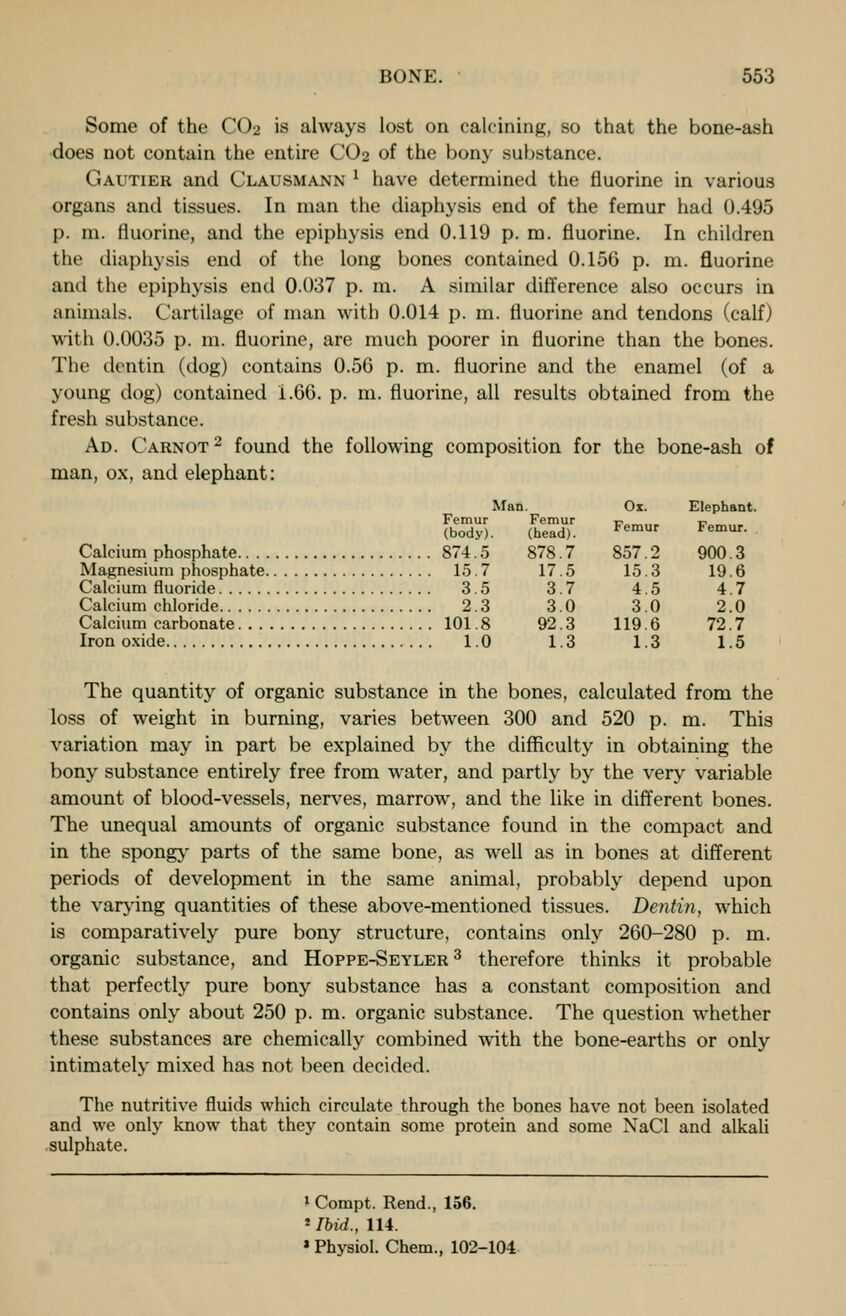
Full resolution (JPEG) - On this page / på denna sida - IX. Tissues of the Connective Substance - III. Bone

<< prev. page << föreg. sida << >> nästa sida >> next page >>
Below is the raw OCR text
from the above scanned image.
Do you see an error? Proofread the page now!
Här nedan syns maskintolkade texten från faksimilbilden ovan.
Ser du något fel? Korrekturläs sidan nu!
This page has never been proofread. / Denna sida har aldrig korrekturlästs.
BONE. © 553
Some of the COz is always lost on calcining, so that the bone-ash
does not contain the entire CO2 of the bony substance.
GAUTIER and CLAUSMANN ! have determined the fluorine in various
organs and tissues. In man the diaphysis end of the femur had 0.495
p. m. fluorine, and the epiphysis end 0.119 p.m. fluorine. In children
the diaphysis end of the long bones contained 0.156 p. m. fluorine
and the epiphysis end 0.037 p. m. A similar difference also occurs in
animals. Cartilage of man with 0.014 p. m. fluorine and tendons (calf)
with 0.0035 p. m. fluorine, are much poorer in fluorine than the bones.
The dentin (dog) contains 0.56 p. m. fluorine and the enamel (of a
young dog) contained 1.66. p. m. fluorine, all results obtained from the
fresh substance.
Ap. Carnot? found the following composition for the bone-ash of
man, ox, and elephant:
~ — Ox. Elephant.
em
(body). (head). Femur Femur. .
Caleram phosphate.) cosn . wseye re yrase: 874.5 878.7 857.2 900.3
Magnesium phosphate.................. 15.7 17.5 15.3 19.6
Calcium fuorider tye? 2 Pi, Pet 1205: Soo ol? 4/5 4.7
Bes IciGHMalloMmoGs4 2414 zesice te os ee ach oes aed 3.0 3.0 2.0
WAICINMUCATDONSLG® s iie-aic ek oaks Peace 101.8 92.3 119.6 (pays
Rromtoxide: sa Ol 2 O8s, o SEE ee. 1.0 iS io 15
The quantity of organic substance in the bones, calculated from the
loss of weight in burning, varies between 300 and 520 p. m. This
variation may in part be explained by the difficulty in obtaining the
bony substance entirely free from water, and partly by the very variable
amount of blood-vessels, nerves, marrow, and the like in different bones.
The unequal amounts of organic substance found in the compact and
in the spongy parts of the same bone, as well as in bones at different
periods of development in the same animal, probably depend upon
the varying quantities of these above-mentioned tissues. Dentin, which
is comparatively pure bony structure, contains only 260-280 p. m.
organic substance, and Hoppr-SryLer? therefore thinks it probable
that perfectly pure bony substance has a constant composition and
contains only about 250 p. m. organic substance. The question whether
these substances are chemically combined with the bone-earths or only
intimately mixed has not been decided.
The nutritive fluids which circulate through the bones have not been isolated
and we only know that they contain some protein and some NaCl and alkali
sulphate.
1Compt. Rend., 156.
2 Tbid., 114.
3 Physiol. Chem., 102-104.
<< prev. page << föreg. sida << >> nästa sida >> next page >>